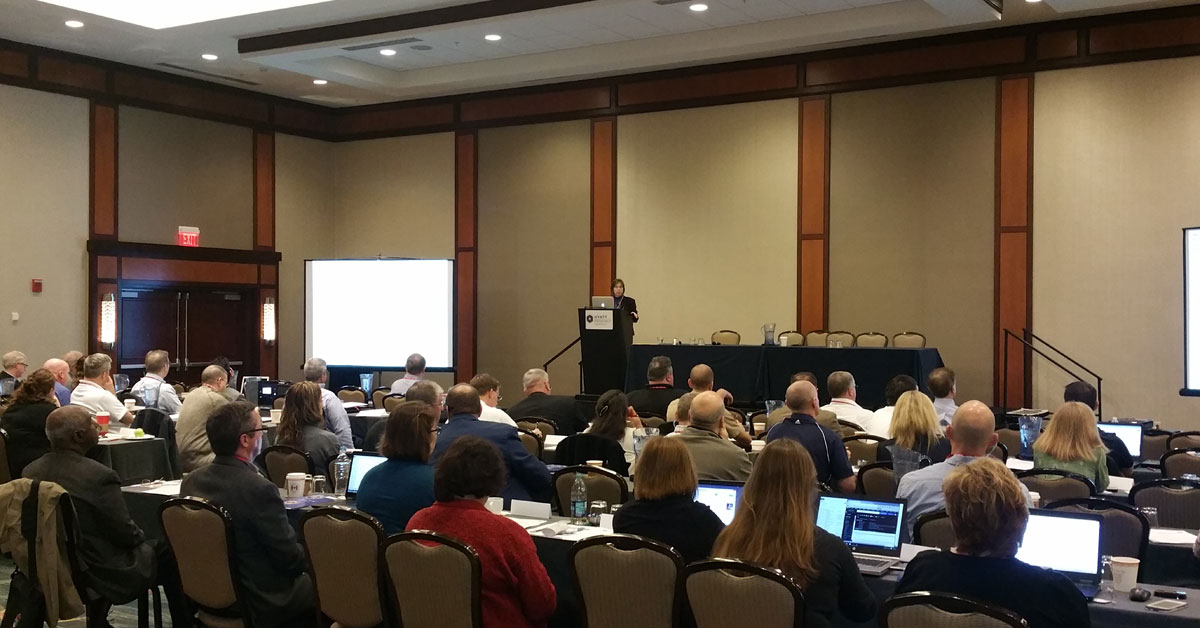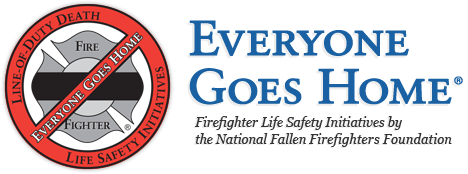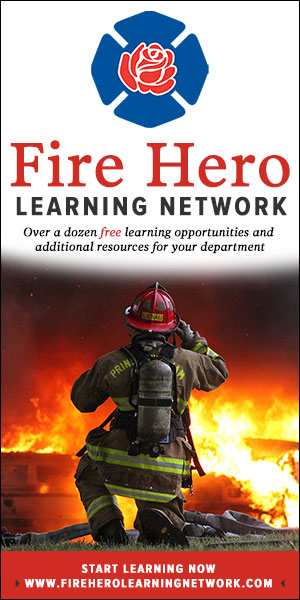
Nearly 60-percent of the line-of-duty deaths in recent years were attributed to heart attacks and related illnesses.
It wouldn’t be the fire service if we didn’t debate and argue about most everything. There are lots of opinions over apparatus, tactics, gear and even what we are going to have for dinner. But sometimes the facts are so clear they leave little room for debate. Here’s one that should be on the mind of every firefighter: Nearly 60-percent of the line-of-duty deaths in recent years were attributed to heart attacks and related illnesses.
While there is nothing to argue about with that sobering fact, there’s a lot to learn about why cardiovascular events occur and what we can do to reduce that number.
Recently, the National Fallen Firefighters Foundation (NFFF) hosted “Heart to Heart,” a two-day conference that brought together leading researchers in the area of firefighter health and fitness, fire service leaders, physicians and advocates to discuss strategies for helping firefighters embrace a healthier lifestyle. The goal is to lose fewer firefighters each year due to heart attacks.
What the Science Tells Us
“Now is the time to focus efforts on firefighter health to bring these numbers down,” said Denise Smith, Ph.D., professor of Health and Exercise Science at Skidmore College and the director of the First Responder Health and Safety Lab.
Dr. Smith is working to identify the key reasons why firefighters experience heart attacks by studying autopsy reports. She discovered that 84 percent of the firefighters who died had enlarged hearts which is usually related to hypertension, obesity and sleep apnea. More study is needed to determine exactly what’s behind this finding and other discoveries by Dr. Smith.
“If we understand whether heart attacks are mostly caused by arrhythmia or plaque rupture, then better screenings can be used to identify and reduce risks,” she explained.
Stefanos Kale, M.D., associate professor at the Harvard School of Public Health reviewed all the completed NIOSH fatality reports from 1992 – 2004 in Massachusetts. He determined if there were better screening programs for pre-existing conditions, approximately 15 percent of those deaths could have been avoided.
Kale also looked at sudden cardiac death rates of firefighters under the age of 45. “Two-thirds were obese, had coronary disease and/or had enlarged hearts,” he said. “Most of the time two of the three factors was involved. Furthermore, the average heart weight was 522 grams while the control group weight was 400 grams.”
Studies are also looking at the effects of sudden physical exertion, heat and dehydration on a firefighter’s heart rate and blood pressure. Through simulating typical fire ground activities and water consumption, Dr. Smith has found firefighters have high heart rates (170 beats per minute) and core temperatures that increase slowly but take a long time to return to normal.
“When firefighters get out of their gear they say they feel better, but their core temperature may still be rising,” Dr. Smith explained. “So the heart is elevated during work and remains elevated after work ends.” This elevation makes the blood more likely to clot which can lead to a cardiac event if there’s a tear in a blood vessel.
This is just one possibility of why many firefighters suffer heart attacks. Cardiovascular events are caused by many factors, including heat and toxins in the fire-fighting environment, hydration, and heredity, and each affects firefighters in different ways.
”Why does one firefighter have a heart attack on a scene and not everyone on a scene?” Dr. Kale remarked during his presentation to the group. “They’re all doing the same job.”
Doctors Who Treat Firefighters Need Better Information
Steven Moffatt, M.D., Chief Medical Officer at Public Safety Medical proposed that better communication and education for physicians is critical. “There isn’t a solid understanding within the medical community that firefighters are at greater risk at younger age for cardiac event than the general population,” he said.
According to Moffatt, too often primary care physicians don’t understand the job descriptions and physical requirements for firefighting and will clear firefighters to return to the job before they’re ready. A physician may not understand a firefighter’s increased risk for cardiovascular diseases or cancer due to toxin exposures and doesn’t proactively test for the diseases.
Wellness Programs Are Crucial
Behavioral risk factors for cardiac events like tobacco use, sedentary lifestyles, poor nutrition and sleep deprivation are all common among firefighters. That’s the finding of Sarah Jahnke, Ph.D., director and principal investigator with the Center for Fire, Rescue and EMS Health Research.
Both Dr. Jahnke and Dr. Moffatt have seen that wellness programs are an effective way to change behaviors and reduce risk for cardiac events. The Indianapolis Wellness-Fitness Initiative (WFI) is one example of a successful program. According to Moffatt, more than 4,500 firefighters received health and fitness evaluations and follow-ups. Only 80 were identified as critical and of those 77 returned to full duty, two were placed on disability and one retired.
“The WFI shows that this proactive approach helps firefighters better understand their conditions, get treatment for their conditions and return to work,” said Moffatt.
Reaction from the Front Line
Jill Captain, M.D., is dismayed by the inconsistencies in health surveillance and guidance for fire and rescue personnel. Captain is an occupational medicine physician with the Montgomery County (MD) Fire Rescue Service.
“Our jurisdiction (Montgomery County, MD) is very fortunate. But there are other large jurisdictions where the firefighters do not receive regular, much less annual, occupational health assessments,” Dr. Captain said. She sees a great opportunity for departments that have ongoing health surveillance data to share that information with other departments. This could help capture a better picture of the state of the health of our nation’s firefighters.
“As a physician who has taken care of firefighters for the last five years, I would like to see wider dissemination of guidance to the doctors that care for fire/rescue in all categories, [including] health and wellness, cardiology, pulmonary, oncology, injury management and exposures [both] medical and chemical.”
From a fire service leadership perspective, Fire Chief Craig Haigh of Hanover Park (IL) Fire Department also believes reducing cardiac events is multifaceted.
“We need to address the overall health and wellness of our personnel. Action items range from annual physicals/wellness exams to treating identified health concerns in order to reduce risk,” Chief Haigh said. Implementing physical fitness programs that include flexibility, cardiovascular and muscle development along with nutrition education are needed.
Interventions on the scene of an incident and during training are also critical to help firefighters recover from the stressors they endure, according to Chief Haigh. “We need to develop and implement on-scene rehab programs designed to address dehydration, core body cooling, nutritional needs, and appropriate rest and recovery.”
He also believes improving education about carcinogenic contamination from turnout gear, equipment, apparatus and the station is also paramount to improving health and further reducing line-of-duty deaths due to diseases.
Getting Information into the Right Hands
Michael Anderson, a captain with the Pflugerville (TX) Fire Department and the Western Advocate Manager with the NFFF’s Everyone Goes Home® program believes distributing this information in a practical, user-friendly method is what ultimately will make a difference to doctors, fire service leaders, and firefighters.
”I think that a good avenue would be a series of short training modules that are modeled after the USFA coffee break series,” Captain Anderson told those attending the conference.
Dr. Captain and Chief Haigh agree. Dr. Captain envisions health and wellness links for firefighters that provide proactive tips and guidance for making personal changes. Likewise, doctors need to know where to go to find the background and guidance for evaluating and treating their patients.
Chief Haigh wants a national education program supported by the IAFC, NVFC, and IAFF. “This will allow all firefighters to receive education and understand the steps necessary to address health and wellness concerns,” he said.
Next Steps
The meeting’s presenters and attendees were equally motivated to spread the word that the number of firefighter fatalities can continue to decline if individuals make health and fitness their priority. The NFFF will produce a full report of the meeting and work with other organizations to share the information.
“We’re beginning to see the difference that education and training can do to reduce the number of trauma related deaths. Armed with this information, I have every reason to believe we will begin to see a reduction in the number of health-related firefighter deaths,” said Chief Ron Siarnicki, executive director of the NFFF.


